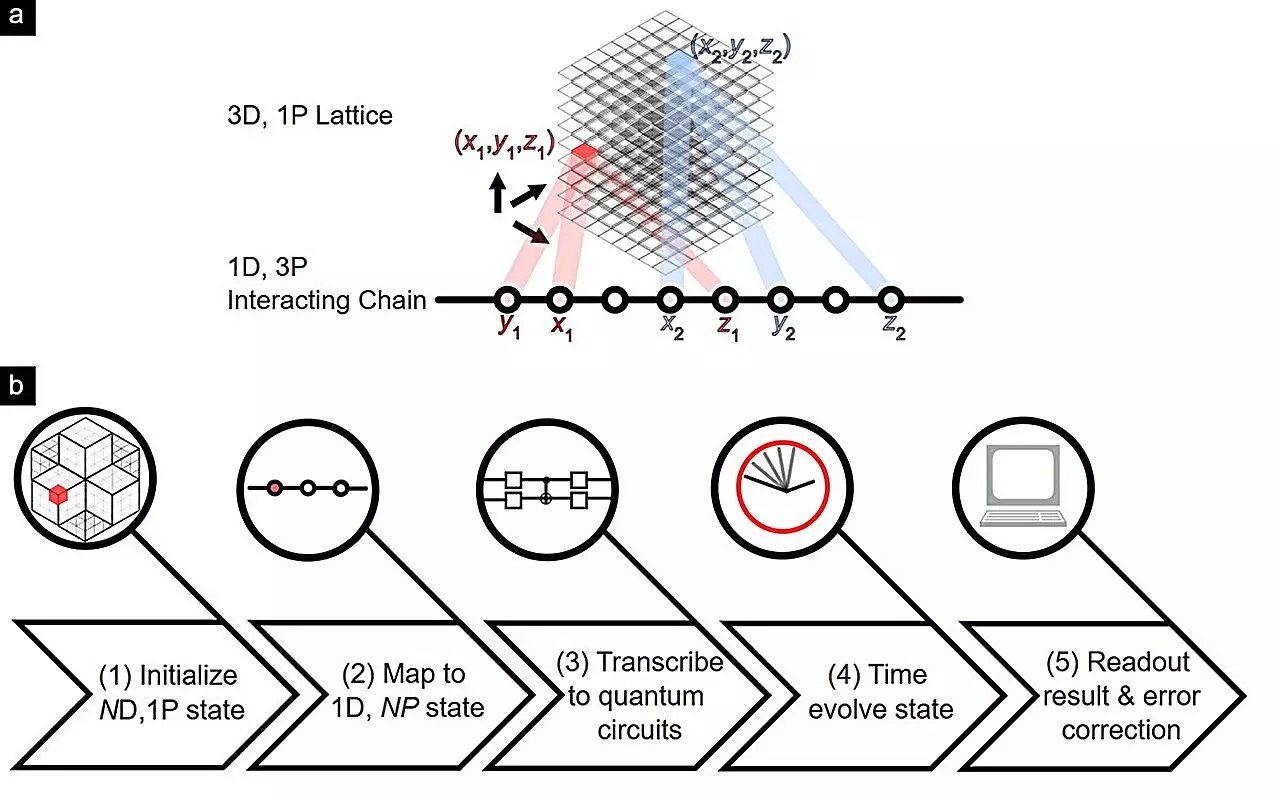In a groundbreaking study conducted by researchers at the National University of Singapore (NUS), higher-order topological (HOT) lattices have been successfully simulated with unparalleled accuracy using digital quantum computers. These intricate lattice structures play a crucial role in understanding advanced quantum materials with robust quantum states, which have significant implications for various technological applications.
Led by NUS Assistant Professor Lee Ching Hua from the Department of Physics, the team of researchers developed a scalable method to encode large, high-dimensional HOT lattices into simple spin chains present in digital quantum computers. By utilizing many-body quantum interactions, the researchers were able to leverage the vast amount of information storage capacity provided by quantum computer qubits. This approach minimizes the quantum computing resources needed while ensuring resistance to noise, paving the way for new possibilities in simulating advanced quantum materials.
The study published in Nature Communications highlights the ability of the research team to explore the intricate signatures of topological materials on quantum computers with a level of precision previously unattainable. The team was able to measure topological state dynamics and protected mid-gap spectra of HOT lattices with unprecedented accuracy, despite the limitations posed by current noisy intermediate-scale quantum (NISQ) devices. This achievement was made possible through the implementation of advanced error mitigation techniques developed in-house.
While existing breakthrough studies in quantum advantage have been limited to specific tailored problems, the researchers at NUS have identified new applications where quantum computers offer unique advantages. By simulating high-dimensional HOT lattices, the team has opened up new research directions in quantum materials and topological states, hinting at the potential for achieving true quantum advantage in the future.
The successful simulation of HOT lattices using digital quantum computers represents a significant milestone in the field of quantum materials engineering. By unlocking the potential of topological quantum materials, researchers are paving the way for groundbreaking advancements in technology and science. This innovative research not only expands our understanding of quantum systems but also holds promise for the development of more efficient transport and signal transmission technologies in the future.


Leave a Reply